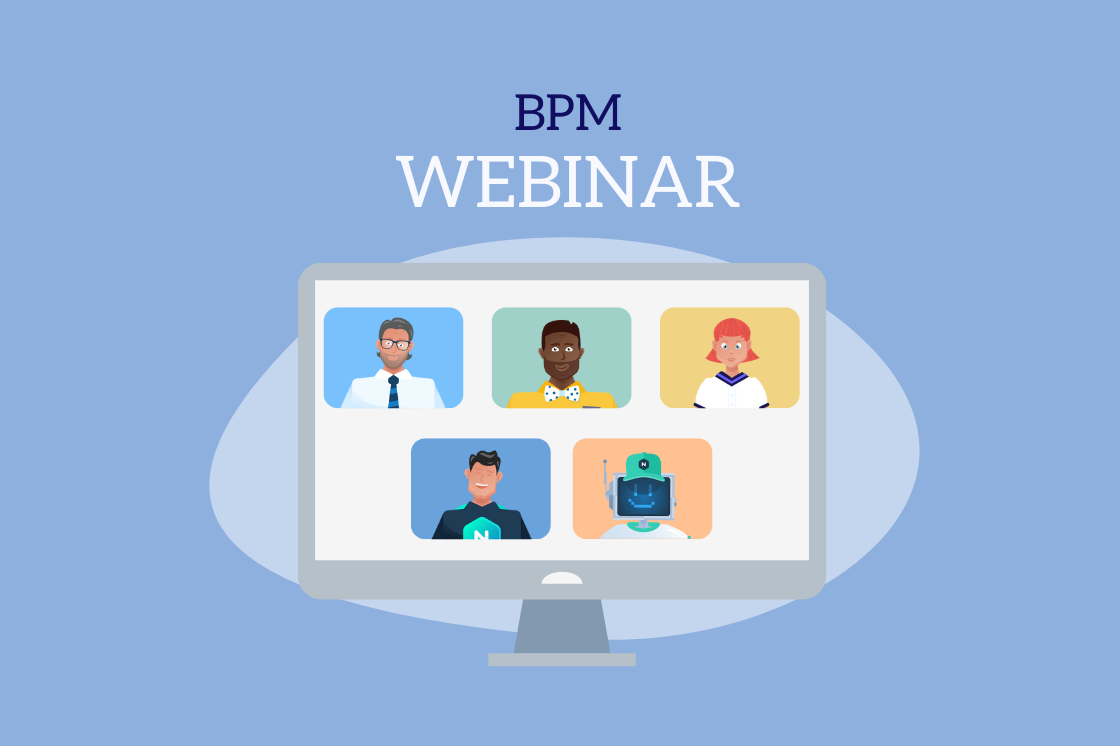The Importance of Business Process Governance in your BPM program.
In previous articles, we have emphasized the significance of Business Process Management (BPM) and how it can provide tangible benefits to the business. However, to sustain this value over time, it is essential to incorporate Business Process Governance as a crucial component of your BPM program,
What is Business Process Governance?
Business process governance is the practice that ensures business processes remain aligned with the organization's goals and objectives. It involves establishing accountability, implementing policies and controls, measuring performance, and addressing deficiencies. The purpose of business process governance is to mitigate financial, regulatory, and operational risks.
Business Process Governance is a critical element within the Business Process Management cycle, serving as the linchpin for organizational success.
As businesses invest valuable time and resources in discovering, mapping, automating, and executing their processes, it is imperative to ensure that these processes continue to drive value.
Without the guiding hand of governance, these processes may deteriorate, becoming cumbersome, outdated, and inefficient.
The absence of proper governance also exposes organizations to significant financial, regulatory, and operational risks.
By embracing a robust process governance framework, these risks can be mitigated, safeguarding the organization's interests and ensuring sustainable process excellence.
Process Governance Framework
The establishment of a process governance framework is an essential part of your business process management initiatives.
A business process governance framework must include process accountability, policies and controls, performance measurement and analysis, and deficiency resolution.
Reference to these elements should be included in your process documentation so that governance requirements are documented and communicated to all stakeholders.
Establishing Process Accountability
Ensuring process accountability is a crucial aspect of Business Process Governance. By clearly delineating roles and responsibilities within each business process, organizations can ensure everyone clearly understands their role in the process. This alignment helps foster process efficiency and effectiveness.
An integral role within Business Process Governance is that of the Process Owner. This individual is tasked with overseeing and managing a specific business process from start to finish.
Serving as the main point of contact for any process-related issues, improvements, or changes, the process owner ensures alignment with the organization's goals and objectives.
The process owner also diligently monitor performance metrics, identify areas for optimization, and spearhead continuous improvement efforts.
The presence of a dedicated process owner is paramount in upholding accountability, efficiency, and effectiveness within the organization's business processes.
It is also critical to assign accountability and responsibility for each step of the process. This ensures tasks are completed efficiently and effectively and also cultivates a culture of ownership within the organization.
Utilizing a RACI Chart to document process responsibilities provides a clear overview of who is responsible, accountable, who can be consulted, and who needs to be informed on the status of a task. Check out this article on How to Create a RACI Chart: The Benefits and How to Get Started.
Implementing process accountability is a crucial step in building a strong foundation for successful Business Process Management initiatives.
Implementing Process Policies and Controls
Effective governance requires documented and enforced process policies and controls to guide those responsible for process execution.
Process Policy
A process policy is a set of guidelines and expectations that govern the execution and management of a specific business process within an organization. The policy helps ensure consistency in process execution.
Within a particular business process, process policies provide a framework for decision-making, accountability, and quality control.
Let's consider the example of a process policy that deals with a security breach. This policy should clearly define the definition of a breach, outline the responsibilities of the response team, set out notification and escalation requirements, and establish expectations for reporting and documentation.
Process Control
While a process policy sets the guidelines and expectations for a business process, a process control focuses on the real-time management and adjustment of that process to ensure it operates effectively and efficiently.
For example, a company can create a process control for inventory management to replenish inventory when it falls below a certain threshold.
In some cases, organizations are required to align with external controls as part of their GRC (governance, risk, and compliance) requirements.
Some examples of external control frameworks include:
- HIPAA controls are measures that covered healthcare entities and their business associates must implement to ensure the confidentiality, integrity, and availability of protected health information (PHI), especially electronic PHI (e-PHI). These controls are mandated by the HIPAA Security Rule, which sets national standards for the protection of e-PHI.
- COSO Controls are a set of financial controls used to prevent, detect, and manage fraud risk related to external financial reporting.
- COBIT Controls provide a framework for the governance and management of enterprise information technology to ensure effective management of IT resources and alignment with business objectives.
- NIST Security and Privacy Controls are a catalog of security and privacy controls that can be applied to manage risk for organizations of all sizes, sectors, and types. The controls are designed to protect the confidentiality, integrity, and availability of information systems and the data they process, store, and transmit.
Measuring and Analyzing Process Performance
Measuring and analyzing process performance involves the systematic tracking of key performance indicators (KPIs) that are relevant to the specific processes being evaluated.
This activity not only helps in identifying the efficiency and effectiveness of current processes but also in uncovering areas for improvement.
Through the collection of data over time, organizations can establish baselines, set realistic performance targets, and monitor progress towards achieving these goals.
Analyzing process performance often involves the use of statistical tools and methodologies to understand variability, pinpoint root causes of issues, and predict future performance.
By continuously measuring and analyzing process performance, organizations can make informed decisions, optimize operations, enhance customer satisfaction, and ultimately achieve a competitive advantage in their industry.
This ongoing cycle of measurement and analysis fosters a culture of excellence and innovation, driving businesses towards operational excellence and improved outcomes.
Addressing Process Deficiencies
Improving organizational efficiency and effectiveness involves addressing process deficiencies.
The ongoing measurment and analysis of process performance is crucial in identifying any gaps, bottlenecks, or inefficiencies that hinder performance.
It is also important to have a deep understanding of the end-to-end process, which can be facilitated by tools such as process mapping and root cause analysis.
Once the deficiencies are identified, targeted interventions can be designed and implemented to rectify the issues.
These interventions can range from making simple procedural adjustments to adopting new technologies or methodologies.
Engaging stakeholders across all levels of the organization is key to ensure buy-in and to leverage their insights for more effective solutions.
Monitoring the impact of these changes through continuous measurement and feedback loops is essential to validate improvements and ensure that the process remains aligned with organizational goals.
Ultimately, addressing process deficiencies not only improves operational outcomes but also fosters a culture of continuous improvement, resilience, and agility within the organization.
Governance and Process Maturity
As an organization's business process management (BPM) matures, the need for governance becomes more apparent. This evolution in understanding the importance of governance coincides with the growing awareness of BPM.
When a process failure leads to business disruptions, there is a natural inclination to implement more controls. Businesses begin to recognize the critical nature of well-established processes and the significance of governance in ensuring their success.
They come to realize that incorporating checks and balances is essential for maximizing the potential of BPM. With improved process maturity, organizations understand that effective process governance can deliver significant value while reducing costs.
This realization underscores the necessity of overseeing process improvement initiatives, highlighting the pivotal role that governance plays in driving operational excellence and sustainable growth. Learn about the other benefits of a Business Process Management program.
Process Governance and Automation
Process automation is an essential tool for streamlining business operations. However, without proper process governance in place, automation can lead to chaos and inefficiency.
The right balance between governance and automation is crucial to ensure that the automated processes work efficiently.
This requires a clear process governance model that establishes objectives, controls, and metrics to measure the performance of the automated processes.
It is important to note that too much governance can hinder the flexibility and adaptability that automation brings. Therefore, organizations should share the responsibility for process governance between IT and the business to ensure that their automation initiatives are successful and sustainable. Learn how to Automate Business Processes to Boost Efficiency and Drive Innovation.
Striking a Balance Between Process Governance and Agility
When it comes to governing your processes, it's important to strike a balance. Over-governing can stifle your business's ability to adapt and be flexible, while too little governance can lead to duplication of effort and increased risk of rule violations. Standardization can be a real advantage, but it can only be achieved with effective rules and safeguards in place.
Without effective governance, your processes will erode over time. This lack of management will lead to diminishing returns and potential process failure.


